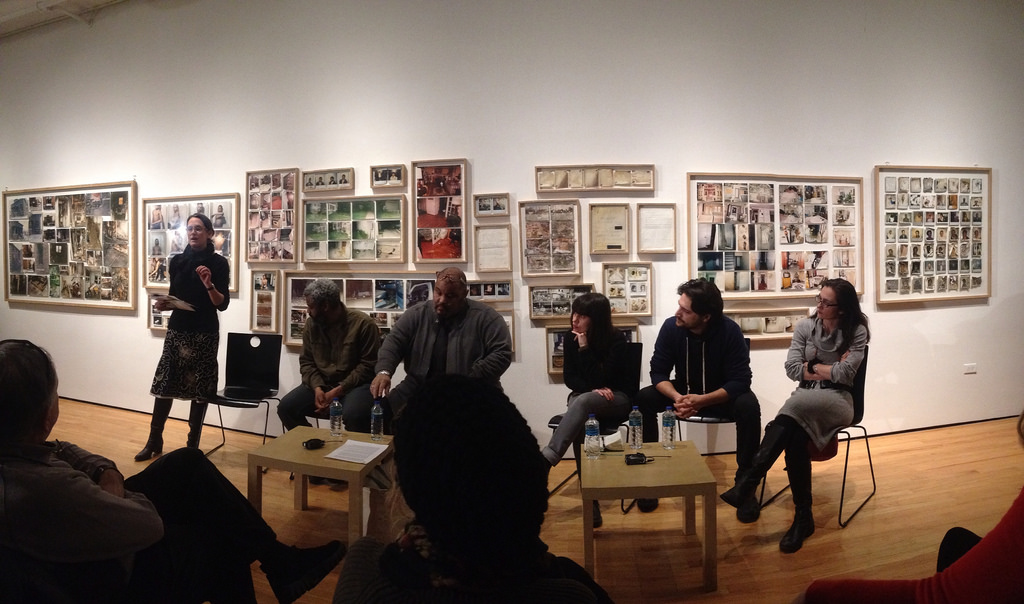
Interesting Evening at MoCP
[flickr id=”12197679954″ thumbnail=”medium” overlay=”true” size=”large” group=”” align=”none”]
My first day of the Spring semester was a long one. This was mostly because there was a new show up at MoCP (which is in the bottom of the photo building) and to go along with that new show, there was a panel discussion with two of the artists (which made up a collective) that had work in the show. The panel also included Columbia faculty and recent selection for the Whitney’s Biennial Dawoud Bey and the Ren’s Hamza Walker. In short, it was not something I was about to miss.
The current show is titled “Archive State” and focuses on art and artists that use found material to make their work. The two artists that came to the panel were Arianna Arcara and Luca Santese, and Italian artist collective. The piece that they had in the show was titled “Found Photos in Detroit”. The two are photo-journalists and traveled to Detroit in 2009 to document the economic collapse. And while they did end up shooting their own images while they were there, the body of work that has received more attention was made by gathering found photos from around Detroit and organizing them into a book of the same title.
There are a number of issues with the work that were brought up during the discussion. One of those being that while the work has received positive reviews in Europe, it has never shown in the US until now. There was an interesting discussion around why this might be.
There are also a number of ethical questions regarding this work, especially since much of the imagery seems culled from abandoned police stations. Images of crimes, abuse, and murder litter the walls.
Hamza and Dawoud have to be two of my favorite people to listen to. They are quite insightful and have really different styles, which made the evening somewhat comical. Dawoud is very slow and considerate in his speech, as if the thought is fully-formed before it leaves his mouth. Hamza, on the other hand, seems to have so much going on inside his head that the thoughts just flow out, many times unable to be finished before the next one starts.
Because of this, and the fact that English was the second language of the artists, I found it a little frustrating when looking for answers. The artists didn’t seem to be able to grasp some of the concepts that Dawoud and Hamza were trying to pry out. Maybe this was a language barrier, or maybe it also had something to do with my belief that the two artists had waded into waters they didn’t quite understand in the first place.
